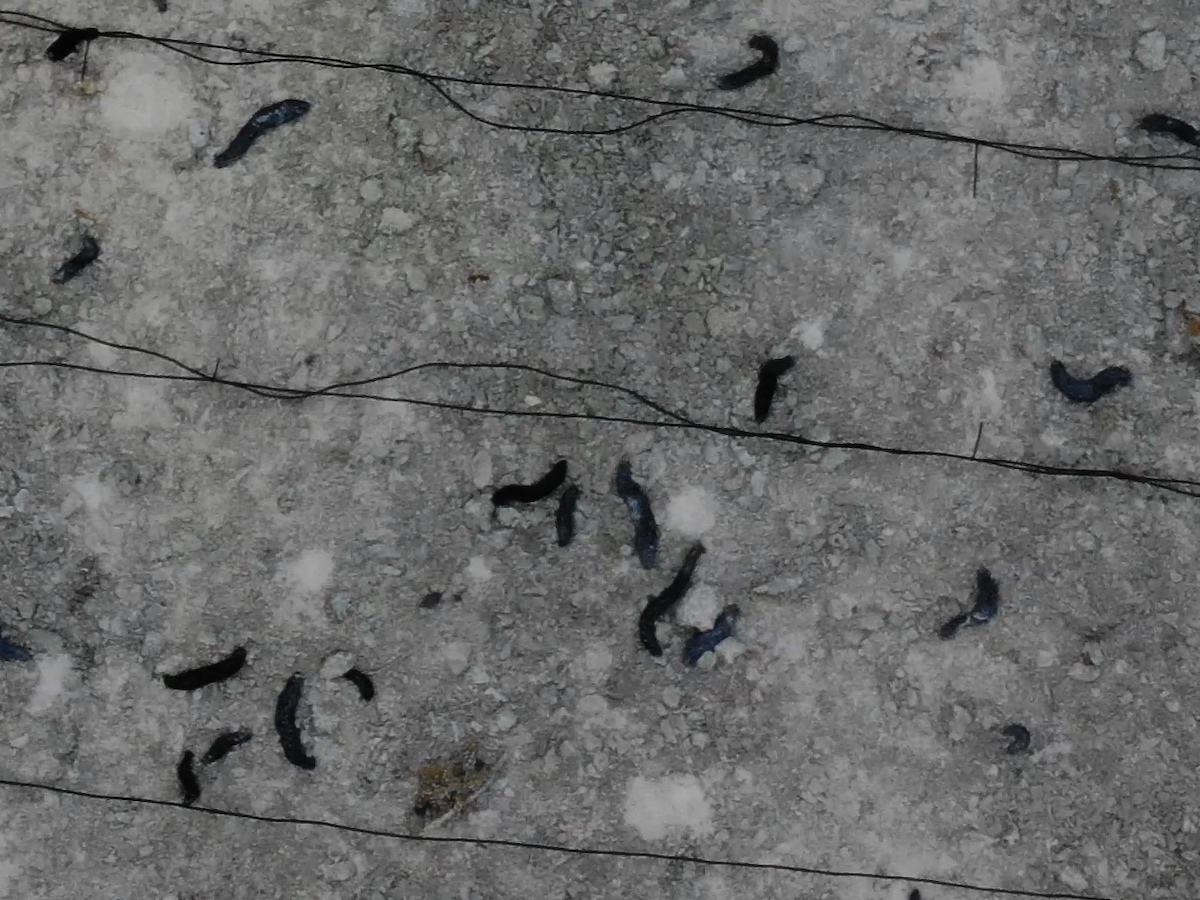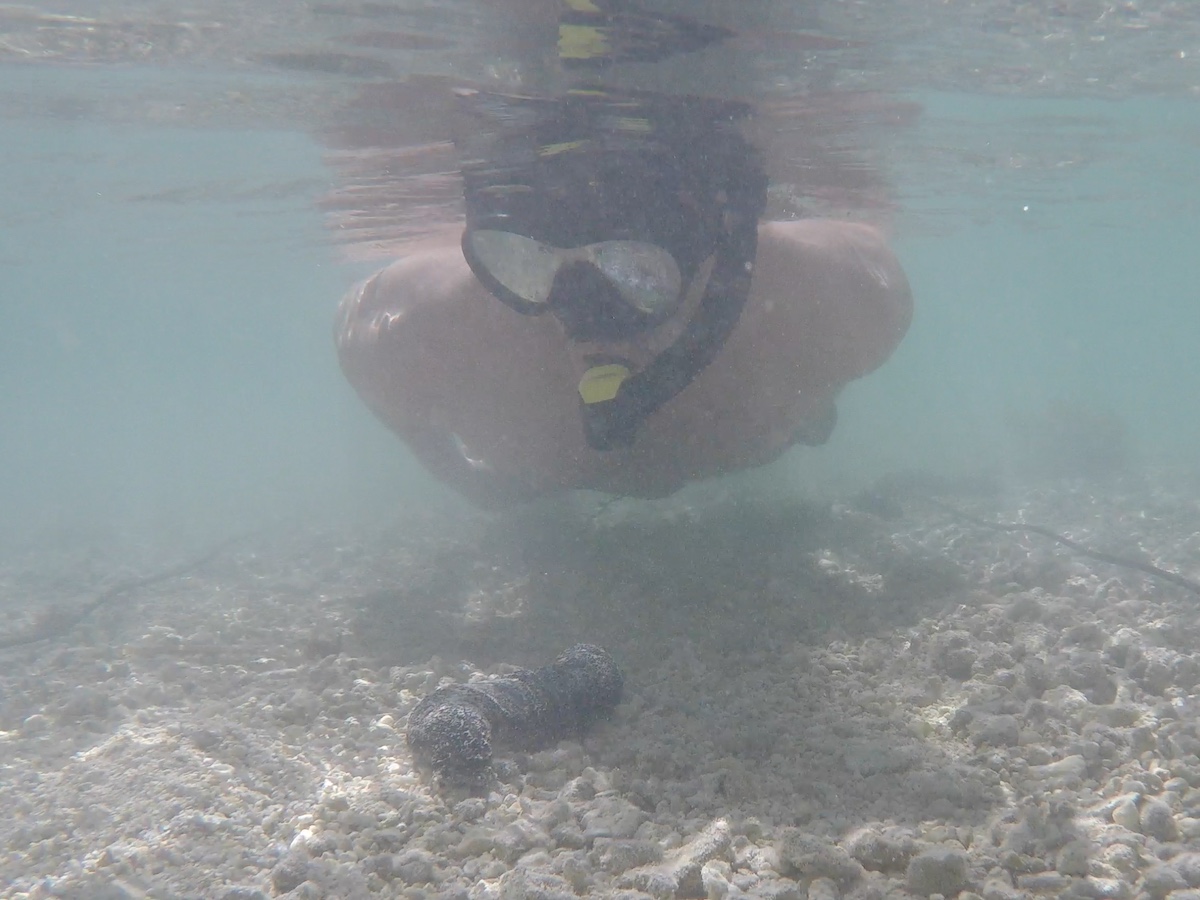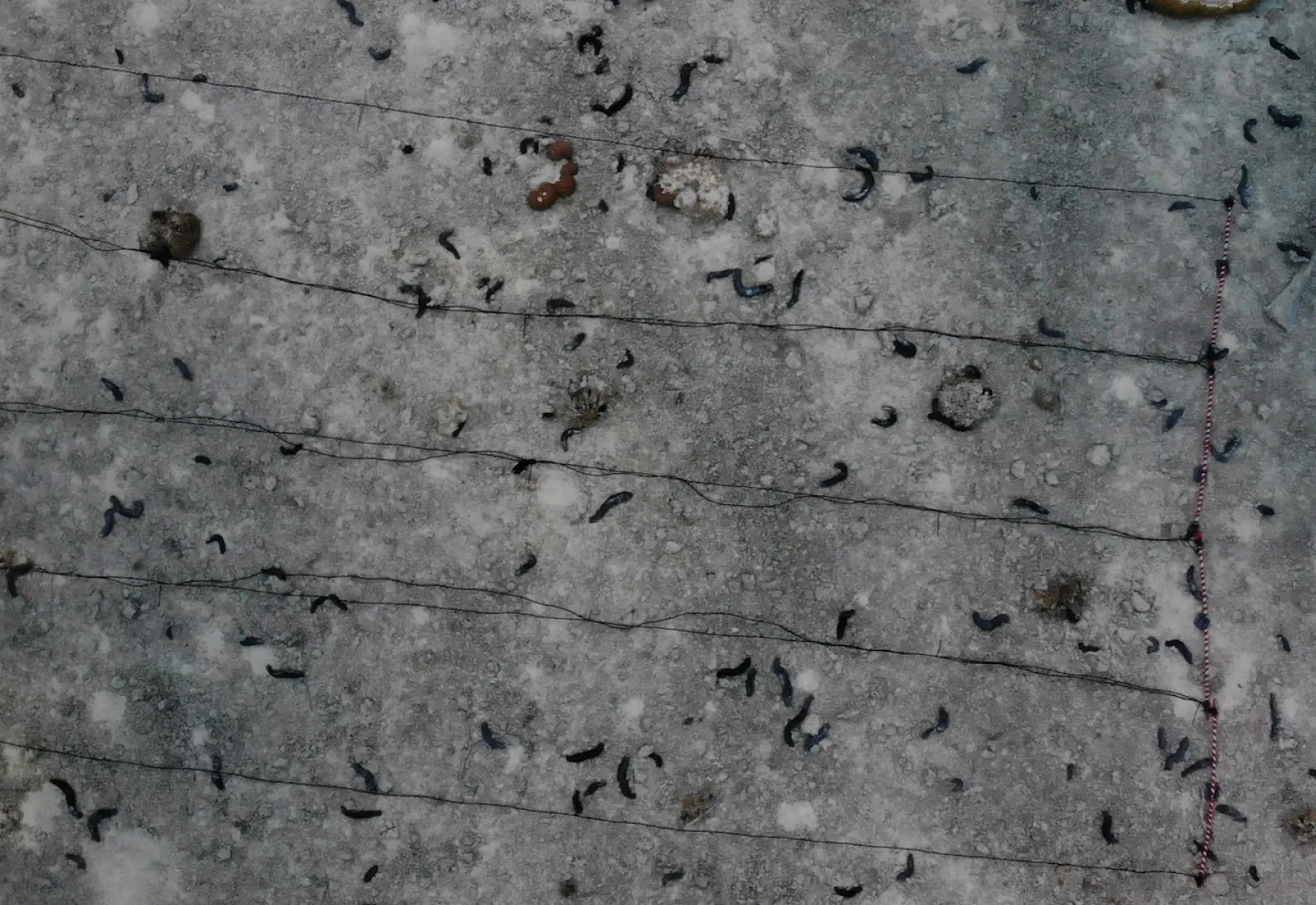Many sea cucumber populations around the globe have severely declined over the last two decades, due to over exploitation and habitat degradation. Being able to reliable count animals is the first step in estimating population sizes, and is essential for their proper management and conservation.
Sea cucumbers have traditionally been counted using diver or snorkeled based surveys, which a number of limitations, including a small range and observer bias. This new study compared traditional transects surveys with drones (unmanned aerial vehicles) and machine learning to estimate sea cucumber density in shallow environments. All three methods produced similar counts, except at relatively high densities, where drones and machine learning began to underestimate.


Using drone images of the study site, the scientist simulated potential transects locations and determined a minimum of five samples were required to reliably estimate densities, while sample variance plateaued after 25 transects.
“These results illustrate the drone’s ability to survey small invertebrate species, while saving time, money, and labor compared to traditional methods, and highlights their potential to maximize efficiency while designing transects surveys,” said Dr. Kilfoil.


